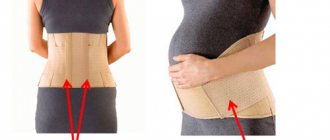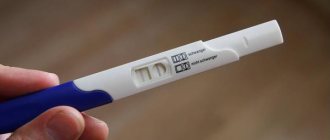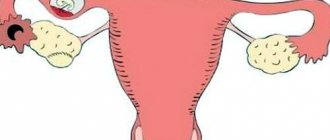At 39 weeks of pregnancy, the female body experiences as many unpleasant symptoms as never before during the entire period. Most of them are associated with preparation for the birth process: diarrhea helps the intestines to clear, prolapse of the abdomen prepares the baby to enter the pelvis, and pain in the lower uterus indicates ligament divergence and softening of the cervix. Preparatory processes literally cover the entire body, so pulling sensations in the lower abdomen may be associated with other features of this period.
Fetal development
At this time, the child has already grown significantly, so he no longer has enough space in the uterus to make active movements. Now he can only turn slightly, and the woman will feel light internal tremors. With the help of such movements, he begins to train coordination of movements, gradually increasing muscle strength. The expectant mother needs to monitor the frequency of movements. Normally, a child should make himself known at least 10-12 times. It is important to pay attention to the nature of the movements. If they are too intense, or, on the contrary, are absent for a long time, then you need to inform your doctor about this as soon as possible, since such changes are a sign of trouble.
The baby in the womb can react to light and dark. He feels touches on his stomach and hears loud sounds. From the first days of life, the baby will learn to focus his gaze, so you need to smile at him.
The baby is completely ready to be born. His lungs, digestive organs, heart and other systems will already be able to function normally outside the womb. However, they continue to improve, and this process does not end after birth.
At this time, myelination of neurons continues, reflexes are formed, and the nervous system is improved. The most developed will be the sucking reflex. After a few feedings, a chewing reflex will appear.
At 39 weeks of pregnancy, the baby’s pancreas is already active, producing enzymes necessary for digesting food. At the same time, the child’s intestines are sterile and covered with small villi. The first bacteria will appear in it after the baby tries breast milk. Now the intestines contain only meconium (original feces). It can come out either after the baby is born, or while still in the womb, before labor begins. The reason for this may be a lack of oxygen in the last stages of pregnancy. If meconium was passed before the baby was born, then after birth, obstetricians perform bronchial lavage to clean them. As before, the fetus continues to receive nutrients through the placenta, but by the 39th week it begins to age.
False contractions
Every woman experiences training contractions in the last stages of pregnancy. And sometimes it can be 39 weeks. For the uterus, childbirth is a significant burden for which you need to fully prepare. The organ relaxes and tenses, which is accompanied by pain in the abdomen, a pulling sensation in the back, and the abdomen may also become hard.
Training contractions begin gradually:
- at 37-38 weeks the stomach may not hurt, and the process is almost imperceptible;
- gradually the intensity increases, the woman is bothered by pain, as during menstruation;
- at 39-40 weeks, training contractions can easily be confused with childbirth, but they do not have the same exact interval.
If the repetition of contractions occurs more often than every 10 minutes, you can think about starting labor.
Also, some time before giving birth, with the onset of training contractions, a woman’s body weight decreases by 500-2000 g on average. Swelling decreases as excess fluid leaves the soft tissues. The child's weight is rapidly increasing. His average weight by 39 weeks is already 3-4 kg.
Position of the baby in the uterus
By this time the child had taken his final position. There is not enough room for him in the uterus, so the fetus’s legs are pressed to the stomach and the arms are folded on the chest. This is the most suitable position for the easiest passage through the birth canal. In 95% of cases, the baby's head is pressed against the pelvis.
Sometimes the baby may be in a breech position. There is no need to panic about this, since it will be possible to give birth naturally, without harming the health of the woman or baby. If the doctor suspects any threat, a caesarean section will be performed.
All women whose baby is in a breech position are sent to the maternity hospital even before labor begins. There, a control ultrasound is performed, during which the size of the child is assessed, its location is clarified and the method of delivery is determined.
How to understand that false contractions have begun:
- there is a feeling of compression in the lower abdomen or groin and/or in the upper part of the uterus;
- the sensations extend only to some area of the abdomen and do not radiate to the back or pelvis;
- irregular contractions - from a couple of times a day to several times an hour, but less than six times an hour;
- contractions may be painless, but discomfort is felt;
- contractions do not have a clear rhythm;
- The intensity of the contraction decreases quite quickly.
What women experience at 39 weeks of pregnancy
At this time, a woman is most often in agonizing anticipation of the baby being born. After all, the birth process can begin at any moment. It is important to maintain peace of mind and calm: the bags for the maternity hospital are packed, there are no health problems. However, slight nervousness is usually present in every woman. To remove it, you must talk to the child and listen to his movements. After all, the baby will have to go through an equally difficult path.
It will not be possible to miss the onset of labor, since the first contractions are always expressed in the appearance of spasms in the lower abdomen. They will repeat every 10-15 minutes, and then even more often. It is possible that water may break and bloody discharge may appear. Some women experience increased appetite at the beginning of labor. Therefore, you need to take care of a light snack in advance.
It is worth paying attention to your blood pressure. Normally, it should be no higher than 140 by 90 and no lower than 90 by 60.
Precursors of the onset of labor at 39 weeks of pregnancy
If contractions have not yet begun, you need to carefully listen to your body. It is possible that it is already giving signals that labor will begin soon. For example, a decrease in appetite may indicate an approaching birth. There may also be weight loss. Many women note a loss of 1-2 kg.
If earlier false contractions were weak and painless, then in recent weeks they may become more intense and frequent. And at their peak, hardening of the abdomen is observed. Some expectant mothers are very worried that they will not be able to distinguish false contractions from real ones. In fact, it is difficult to confuse them. As a rule, false contractions end when the body position changes, or after a short walk around the apartment. If spasms and pain in the lumbar region go away, then it is too early to go to the maternity hospital.
The imminent onset of labor may be indicated by mucus appearing in the vaginal discharge. Sometimes it is transparent, and sometimes it can have a pinkish or brown tint. Don't be afraid - this is part of the mucus plug that comes out. Removal of the mucus plug is a natural process. The cervix gradually softens and contracts, preparing for the birth of the baby. Sometimes you can see the entire cork. It is represented by a lump of mucus, in which there are streaks of blood. The entire volume of the cork can fit in 2 tablespoons. If this happens, then labor will begin very soon.
Many women feel an unprecedented surge of energy before labor begins. With redoubled effort they begin to prepare the house for the arrival of a new resident. This is a very pleasant process, so you shouldn’t deny yourself it. However, hard work cannot be done. Let other family members do it.
Another sign of imminent labor is indigestion. There may be increased feelings of nausea, indigestion, and sometimes vomiting and diarrhea.
However, until real contractions begin, you need to continue to lead a measured lifestyle, spend as much time as possible in the fresh air, and take walks. At the same time, you should not go far from home, and it is better to keep the exchange card with you.
Abdominal prolapse
The belly most often droops between 36 and 39 weeks. This is one of the signs that suggests the imminent onset of labor. Although abdominal prolapse may not occur at all.
When the stomach drops, it becomes much easier for a woman to breathe, because the strong pressure on the diaphragm stops. Belching and heartburn also disappear. However, urination becomes more frequent as the uterus begins to put more pressure on the bladder.
You should also not worry too much about the appearance of nagging pain in the lower back. At 39 weeks of pregnancy, this is normal, because labor will begin very soon.
Necessary studies and analyzes
And this week you could have a urine test. If you had previously experienced increases in blood pressure, then before your appointment the doctor might ask you to measure your blood pressure and note the results. Because in the case of a significant increase in pressure, the presence of edema and protein in a urine test, we can say that the pregnant woman is developing gestosis. In this case, at 39 weeks you will be immediately sent for preservation and, perhaps, by the end of this week you will already give birth.
Since by the end of pregnancy, women develop various problems of varying severity, they can be sent to a hospital, where it is possible not only to check the condition of the expectant mother every day, but also to provide first aid. At week 39, you may additionally undergo an ultrasound and CTG if you experience symptoms indicating the presence of pathology in the body of the pregnant woman or fetus.
Causes of pain at 39 weeks of pregnancy
The causes of pain at 39 weeks of gestation may be as follows:
- Pain in the lower back and lower abdomen occurs due to the fact that the body is preparing for childbirth: the stomach drops, and with it the baby in the uterus.
- Pain in the pubic, pelvic and sacral region occurs due to softening of the pelvic bones and ligaments. This occurs under the influence of the hormone relaxin. Moreover, the bones gradually move apart so that the baby can be born more easily. It’s worth being a little patient, because after giving birth everything will pass.
- Pain in the back and spine appears due to the fact that a woman’s center of gravity is shifted. The same reason causes pain in the lower extremities.
- Aching or shooting pain in the back of the leg occurs due to the fact that the femoral nerve is pinched. Sometimes the pain is so intense that it even reaches the knee.
- Sometimes women notice some breast tenderness. This is also a variant of the norm, because the body prepares her for the upcoming process of breastfeeding. Therefore, in addition to pain, a feeling of heaviness may appear in the chest, and colostrum may come out of the nipples.
To reduce pain in the back, lower back and legs, you need to unload them as often as possible. You should sleep in the correct position, and it is equally important to wear a prenatal bandage.
How to help a woman with unpleasant nagging pain
Prenatal bandage reduces the load on the pelvic bones.
It is not possible to completely get rid of discomfort at this stage, since it is associated with the physiological characteristics of the body. But you can make you feel better:
- wear a prenatal bandage selected by the doctor;
- sleep only on the left or right side, avoid the position on the back;
- rest if there are any signs of fatigue;
- move less so as not to provoke fetal activity.
No-Spa for pain relief
Application No-Spa can be prescribed before childbirth, as it prepares the uterus, cervix, and prevents ruptures of soft tissues. We must not forget about contraindications:
- isthmic-cervical insufficiency;
- lactose intolerance;
- low cardiac output;
- renal or liver failure;
- weakened cervical tone.
Pain in the lower abdomen, as during menstruation, at 39 weeks is a normal condition for the female body. The symptom can radiate to the back, lower back, hip area and even knees - it all depends on what structures and tissues are involved in the process, what nerves are affected. If there is no heavy bleeding, fever or vomiting, there is no need to worry. In other cases, you need to immediately contact an ambulance.
What kind of discharge can there be?
Discharge at this stage should be milky white, with a uniform consistency. A slight sour odor may also be present. Pinkish or transparent mucus in the discharge is normal and should not be alarmed. In this way, part of the mucous plug comes off, which closes the entrance to the uterus.
Pathology is indicated by discharges such as:
- Purulent mucous discharge;
- Discharge with flakes;
- Curdled discharge;
- Green or yellow discharge.
If such discharge is detected, you must consult a doctor and treat the existing infection. If this is not done, then the risk of infection of the child during childbirth is high.
When amniotic fluid ruptures, even in small quantities, you must go to the maternity hospital. The discharge appears as a thin, watery discharge that may be clear or yellowish. Sometimes they go away immediately, and sometimes in small portions. The latter option indicates that the walls of the placenta have become thinner and have begun to leak fluid. In any case, medical consultation is necessary; the breaking of water cannot be ignored. Thus, when the placenta wall becomes thinner, the child becomes extremely vulnerable to various infections.
Discharge with blood requires the woman to promptly call a medical team. Most often, this indicates abruption of the placenta, which has a normal location. Sometimes blood in the discharge is a sign of placenta previa. However, by this time, presentation is excluded from the list of pathologies, since the woman has undergone many examinations.
Additional signs and mucus plug release
The main differences between the mucus plug and amniotic fluid
Before the complete discharge of the mucus plug, the main function of which is to protect the fetus from external infection, the woman’s discharge from the birth canal increases. They can be transparent or milky in color with a sour odor.
In some women, mucous discharge may contain blood and other streaks - this is also one of the normal variants. If a symptom of water leakage appears - liquid yellowish discharge - you should immediately go to the hospital, as this is a key precursor to labor.
Heavy bleeding is an alarming sign of placental abruption, which must be monitored in the maternity hospital. Often, placental abruption requires a cesarean section, otherwise mother and baby may die.
The mucus plug is removed as follows:
- Leakage of amniotic fluid occurs.
- There is a click.
- A large amount of warm liquid leaks out.
It is very important to remember the exact time of the outpouring of water, as well as its color, intensity, and smell. Immediately after arriving at the doctor, you must provide all the information. The main goal of obstetricians is to prevent the baby from being inside the uterus for more than 12 hours after the water breaks.
Intimate life
Previously, all doctors unanimously opposed sex so late in pregnancy. This was justified by the fact that during orgasm the uterus contracts, which can lead to the onset of labor. At this point in time, this theory is not considered correct. Doctors point out that a woman should rely on her own desires and listen to her body. If discomfort and fatigue reduces attraction to a sexual partner, then you should not overstep yourself.
If a woman feels the need for intimacy, then she should not deny herself either. Sex is a gentle preparation of the cervix for an imminent birth, because male sperm contains a special hormone (prostaglandin), which makes it more elastic. Orgasm, in turn, trains the uterus and prepares it for high-quality labor.
Doctors in a number of countries even recommend practicing sex in the later stages of pregnancy as a method of natural stimulation of labor.
It is worth remembering that during sex you need to be as careful as possible, since the baby is very close to the birth canal. If pain occurs, then sexual intercourse should be interrupted. You should also avoid uncomfortable positions and eliminate any pressure on your stomach.
Carrying out an ultrasound
An ultrasound examination at 39 weeks of pregnancy can be performed only for special indications. During an ultrasound, the doctor assesses the size of the child and determines the degree of its development.
The condition of the uterus and cervix is also assessed, and the quantity and quality of the pregnant woman’s amniotic fluid is determined. By this time the placenta has the third degree of maturity. The higher this degree, the thinner the walls of the placenta. However, it is through her that the child receives from the mother the antibodies that he needs to form immunity.
An ultrasound examination eliminates the risk of the umbilical cord being entangled in the baby’s neck. However, it is not always necessary to perform a cesarean section when the umbilical cord is entangled. The umbilical cord itself can reach 65 cm in length, so a woman is able to give birth naturally, and doctors will simply remove the umbilical cord from the baby’s neck immediately after his birth. Even if the umbilical cord is short and begins to tighten as the baby passes through the birth canal, doctors are able to decide whether an emergency cesarean section is necessary.
Possible problems
A problem that a woman may encounter is edema at 39 weeks of pregnancy. They appear in almost every expectant mother due to the peculiarities of pregnancy. They do not bring any comfort to pregnant women, because they already have a large burden in the form of a large belly and worries associated with the upcoming birth. To alleviate the condition a little, a woman can do the following:
- Eat less salty food, replace salt with spices when cooking.
- If you are thirsty, drink in small sips so that too much liquid is not retained in the body.
- Often take a position in which your legs are slightly elevated. In this case, venous outflow improves and swelling decreases slightly.
- Move throughout the day. If you lie down all the time, the fluid is more likely to stagnate.
Another problem is unexpected birth. To prevent labor from taking you by surprise, be prepared for it at any moment. Things collected for the maternity hospital should be in a visible place so that anyone close to you can easily find them and bring them to you if necessary. You should carry an exchange card with you, which contains all the necessary information about your pregnancy. Do not go far from home if you are walking, and also avoid traveling. You can also ask your loved ones to take on responsibilities such as going to the store or accompanying the children to school (if you have such responsibilities).
How is childbirth at 39 weeks of pregnancy?
Childbirth at the 39th week of pregnancy is physiological and has a standard course. If labor has begun, you need to concentrate on your feelings. You need to monitor your breathing and take the correct body position. It is important to understand that not only the woman herself, but also the baby needs help, so you need to listen to all the doctor’s instructions and follow them.
There is no need to sit or lie down during contractions. It's better to stay on your feet as much as possible. If contractions intensify, it's time to remember breathing exercises that help relieve pain. You need to breathe deeply and calmly. This will save energy for upcoming attempts.
It is pushing that characterizes the second stage of labor. They can sometimes be confused with the desire to empty the intestines. However, you cannot push without medical supervision. This should only be done on the doctor’s command. When the woman takes a seat in the chair and the body is ready, then you need to start pushing. At this time, the entire volume of air that is in the respiratory tract must be directed down the abdomen. The diaphragm must work, which helps the baby to be born. When the doctor orders you to stop pushing, you need to stop. This time should be used to rest and relax all muscles.
During childbirth, all fears must be cast aside. It is important to help the baby be born, because he experiences stress no less than the woman herself. The birth process takes a lot of energy from a child. It is very important to pull yourself together and not panic. The calmer the woman is, the easier the birth is.
When the baby leaves the birth canal, the final stage of labor will begin - the release of the placenta. At this time, the child will be examined by doctors. The doctor will cut the umbilical cord, the uterus will contract, the placenta will separate and come out along with the membranes and the remaining umbilical cord. The umbilical cord is cut only after the pulsation stops. At the same time, the so-called placenta or placenta emerges. At this point, the birth process can be considered complete.
It is in the first 30 minutes of the baby's life that he will be placed on the mother's breast. This moment will be remembered for a lifetime. The first colostrum is very necessary for the baby for the normal completion of childbirth, for the normal functioning of the intestines, and for the development of immunity. Being close to the mother will make it easier for the baby to adapt to an unfamiliar world.
Features of diagnosis and visiting a doctor
Ultrasound diagnostics is important for the health of mother and baby.
Before the 39th week of pregnancy, a woman must undergo control tests to make sure there are no hidden infections in the body. By this time, you can check the child’s health and find out existing pathologies that could not be identified in the early stages of development.
You can visit a doctor not only when painful sensations appear. It is advisable to go to the doctor at the end of the 38th week and in the middle of the 39th week. If the pain persists for a long time, you can visit a specialist at any convenient time.
At 39 weeks, an ultrasound may be prescribed if the doctor needs to assess the condition of the child and mother on that day. An ultrasound will also determine the exact weight and height of the fetus, activity and development of organs. The specialist evaluates the size of the uterus, its condition, cervical dilatation, and the amount of amniotic fluid. The maturity of the placenta is also determined - degree III. If she is older, this indicates a decline in her functions.
During the diagnosis, the obstetrician-gynecologist must determine how the umbilical cord is located. If it wraps around any organ or the neck of the fetus, extremely careful medical care will be required during the birth process.
Methods of pain relief during childbirth
Perhaps what women fear most is the severe pain that accompanies the process of childbirth. Therefore, the question of pain relief often arises.
Occasionally, epidural or epidural anesthesia is used during vaginal birth. In this case, the lower part of the body becomes insensitive, the muscles relax, but the cervix continues to dilate. Anesthesia helps to lengthen pushing. Indications for pain relief are cardiovascular disease in a woman, slow dilatation of the uterus, or an extremely low threshold for pain sensitivity.
Anesthesia is also performed when it is necessary to begin an emergency operation. It is important to understand that anesthesia for a child is dangerous due to side effects, therefore anesthesia is not performed only to reduce labor pain.
Answers to questions about 39 weeks of pregnancy
- At 39 weeks of pregnancy the plug came off. A day has passed since then. How soon will labor begin?
As a rule, after the mucus plug comes out, labor begins in the next few days. Sometimes it can come out a week before labor begins. It is important to monitor your condition. If the pain in the lower back has become severe, and training contractions have become more frequent, then labor will begin very soon.
- Increasingly, at the 39th week of pregnancy, the stomach becomes hard, and recently this sensation has become painful. Does this mean that you need to go to the maternity hospital?
You need to go to the maternity hospital when a woman has 5 painful and prolonged contractions in 1 hour. However, if the woman feels calmer in the hospital, then she can go there earlier. The doctor will examine the woman, assess her condition and decide on hospitalization.
- At the 39th week of pregnancy, the stomach feels tight, the plug has already come out, pain has appeared in the lumbar region, but the water has not yet broken. How soon will I give birth?
These signs are harbingers of an imminent birth, so you should not panic, but get ready for the maternity hospital.
- Why do my legs hurt a lot at 39 weeks of pregnancy?
Pain in the legs appears due to the fact that the uterus puts double force on the venous vessels, which disrupts the venous outflow. This may cause discomfort in your legs, but there is no danger. You just need to lie down as much as possible with your feet on an elevated surface. Massage also helps a lot. Sometimes leg pain occurs due to muscle spasms. They begin against the background of a lack of calcium and magnesium in a woman’s body. In this case, you should consult your doctor.
- I'm 39 weeks pregnant. Water has been leaking for several hours. What do we have to do?
It is necessary to go to the maternity hospital, since the breaking of water is a harbinger of an imminent birth. Moreover, the child’s natural defenses against infections are reduced, so a professional examination is essential.
Author of the article:
Lapikova Valentina Vladimirovna | Gynecologist, reproductive specialist
Education: Diploma in Obstetrics and Gynecology received from the Russian State Medical University of the Federal Agency for Health and Social Development (2010). In 2013, she completed her postgraduate studies at NIMU named after. N.I. Pirogova.
Our authors
What happens to the expectant mother
Since a pregnant woman can give birth at any moment, she listens sensitively to everything that happens to her. When the 39th week of pregnancy arrives, the harbingers of labor make themselves felt. What can be attributed to them?
- If your stomach drops, there is very little time left before giving birth. It’s true that it’s impossible to say exactly how long it will take for you to give birth - for some, the labor process begins in a couple of days, while for others you need to wait another week or two.
- A decrease in the baby's activity indicates his readiness to be born. The main thing is that this is not a sign of his poor health.
- Have you felt a decrease in appetite? Most likely, you will give birth soon. The thing is that your body does not want to overload itself with digesting heavy food and accumulates strength before childbirth.
- The mucus plug has come off. It can look different, having a shade from beige to pinkish, sometimes there are streaks of blood in it, and the total volume of the mucous lump is about 2 tablespoons. It is especially important to maintain hygiene after this event, because access to the uterus with the amniotic sac opens. It is for this reason that you should abstain from intimate life.
- If training contractions at 39 weeks of pregnancy become more active, and in addition you notice the appearance of pulling and slightly painful sensations in the lower abdomen (they can sometimes spread to the lumbar region), be careful. Keep track of the time during which these contractions last, measure the interval between them. As you walk around the house, you may notice that they have passed. In this case, these are training contractions, but such changes indicate that you will give birth very soon. And in the case when the sensations become more intense, the interval between contractions becomes equal to 5 minutes, and the duration of the contraction approaches 1 minute, go to the maternity hospital.
Discharge at 39 weeks of pregnancy should be no different from those to which you are already accustomed. Therefore, changes in them should be a reason to contact the gynecologist who is managing your pregnancy. Moreover, at this time, you need to act quickly so that your baby does not get hurt.
Stomach pain at 39 weeks of pregnancy
Moreover, an alarming symptom may be that in addition to abdominal pain, a woman notices the appearance of blood on the pad. And it doesn’t matter so much whether there is a little or a lot of it. In any case, it is necessary that she be taken to the emergency department of the maternity hospital as soon as possible, because this is how placental abruption can manifest itself. And this phenomenon threatens the life of the mother and her baby, especially if the percentage of detachment is not so small.
But if your stomach feels tight at 39 weeks of pregnancy, but apart from this there are no other symptoms, it is quite possible that your uterine tone is simply increasing. And this is normal, because even such a load as walking can lead to myometrial tension. Therefore, you should not go far from home so that you can quickly return. As a last resort, sit for a while on some bench so that the uterus relaxes a little. But in the case when the pulling sensations develop into painful ones, do not go away and intensify, you should also consult a doctor without delay.
Sex at 39 weeks pregnant
If you are wondering whether it is possible to maintain intimacy with a partner for such a period, you need to accurately assess your condition. It is worth abstaining from sex when there is a direct prohibition from the gynecologist due to the peculiarities of the course of your pregnancy. Also, do not take risks if your mucus plug has already come off. If the tone of the uterus has often increased recently, be prepared for the fact that labor may begin after intercourse. In addition, it is believed that sperm affects the softening of the cervix, and this also speeds up the onset of labor. But in the case when you do not notice any precursors of labor, then having sex will help reduce the waiting time. You can talk to your gynecologist about this.
Childbirth at 39 weeks of pregnancy
As noted above, the baby is already ready to face the conditions of the world, which are still alien to him. And from the 38th week of pregnancy, childbirth is no longer considered premature. So there's nothing wrong with giving birth this week. Your baby will be born absolutely healthy if the pregnancy proceeded without complications and no pathologies were identified during the research process.











